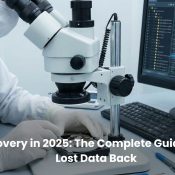Windows 10 updates
Windows 10 updates
Microsoft , the leader in PC operating system market , recently released windows 10. This new improved OS , is built from a blend of existing and old operating systems. This Version of windows offers features that Microsoft is promising will provide its users with seamless integration.
Microsoft has gone back to the old days of including Start menu, which was missing from Windows 8. The big news is inclusion of new features and improvements of Windows 8 that IT managers, administrators and even some CIOs may find interesting in Windows 10, especially when compared to the previous version of the OS.
New features in Windows 10:
- Single platform for smartphones, tablets, and PCs
- Return of Start menus
- New browser, code-named Spartan
- Multiple desktops
- Cortana personal assistant for desktops
Improvements:
- Improved Command Prompt
- Unified app store
- Advanced menu for settings
- More options for Task View
- Revised File Explorer and icons
The big questions : New operating system – new challenges for data recovery?
From a data recovery perspective, however, nothing much has changed from the previous operating systems. Windows 10 uses the default file system NTFS, as does Windows 8 and 8.1. Although a complete change to the new ReFS file system was rumored by professionals in recent months, the last technical build released by Microsoft resulted in no dramatic changes and Windows 10 continuing to use NTFS as the standard file system.
As with Windows 8.1, ReFS is only used in one place of the operating system: the so-called “Storage Space.” This technique allows multiple physical disks to combine into one logical drive. This concept has been transmitted from server technology to the desktop computer. Simply put, you can combine multiple existing hard drives of a computer to a connected storage pool. All hard drives connected in Storage Space are using the new file system, ReFS.
In the case of a data recovery, it all depends on what precisely failed on a Windows 10 computer and which data structures are affected. If it is a standard installation, the data recovery engineers have to work with, among other things, the NTFS structures. With a failed Windows 10 operating system with Storage Space enabled, they have to work with ReFS sometimes including NTFS file systems.
But no matter what file system – both require the detailed experience and know-how in restoring files or complete systems provided by a professional data recovery service Also with Windows 10, the rule is: Users should not attempt to restore data by themselves when the system goes on strike. The wrong technique could cause irreparable damaged to existing data. One should contact a professional data recovery service provider such as East African Data Handlers.
All Categories
- Backup
- BUSINESS EMAIL COMPROMISE ATTACKS
- Cloud back up services in Kenya
- Cloud Computing
- Computer Forensics
- Cyber Attacks
- Data Loss
- Data Recovery
- Data Recovery Contacts
- Data Recovery Cost
- Data Recovery In Mombasa
- Data recovery in Nairobi
- Data recovery in South Sudan
- Data recovery in Uganda
- Data Recovery Kenya
- Data Recovery Rwanda
- Data RecoveryKenya
- Database Recovery
- Design
- Desktop Recovery
- DIGITAL FORENSIC LABORATORY(DFL)
- Digital Forensics
- Digital Forensics Kenya
- Digital Photo Data Recovery
- Email Data recovery
- Hacking
- hardriver Recovery
- Laptop Data recovery
- Mobile Data recovery
- Network and Security Services
- Phone Data Recovery
- Raid Data recovery
- Raid Recovery In Kenya
- Ransomware
- Ransomware Attacks
- Ransomware Removal Services
- Server Recovery
- Services
- Technology
- Uncategorized
- Virtual PBX Cloud Services
- Virus & Malwares




